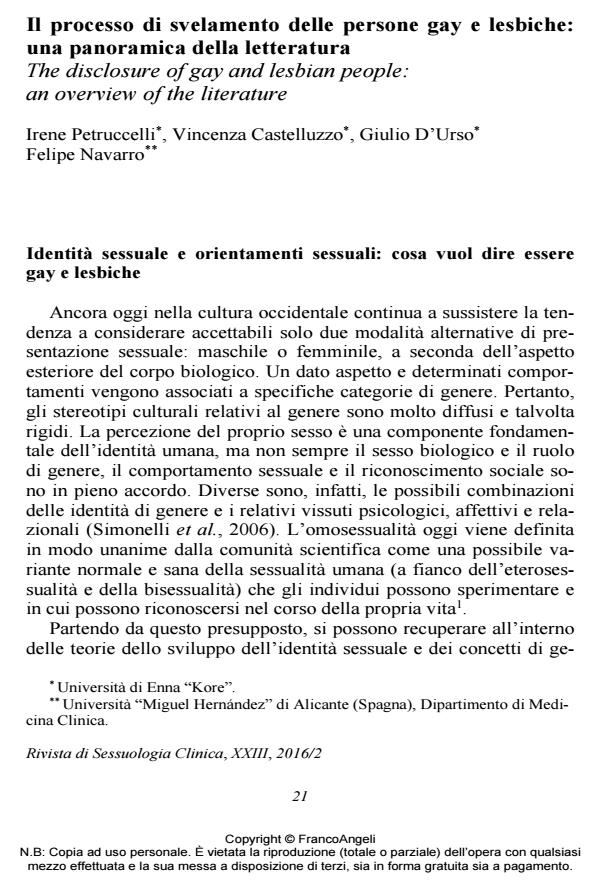Il processo di svelamento delle persone gay e lesbiche: una panoramica della letteratura
Titolo Rivista RIVISTA DI SESSUOLOGIA CLINICA
Autori/Curatori Irene Petruccelli, Vincenza Castelluzzo, Giulio D'Urso, Felipe Navarro
Anno di pubblicazione 2016 Fascicolo 2016/2
Lingua Italiano Numero pagine 20 P. 21-40 Dimensione file 210 KB
DOI 10.3280/RSC2016-002002
Il DOI è il codice a barre della proprietà intellettuale: per saperne di più
clicca qui
Qui sotto puoi vedere in anteprima la prima pagina di questo articolo.
Se questo articolo ti interessa, lo puoi acquistare (e scaricare in formato pdf) seguendo le facili indicazioni per acquistare il download credit. Acquista Download Credits per scaricare questo Articolo in formato PDF

FrancoAngeli è membro della Publishers International Linking Association, Inc (PILA)associazione indipendente e non profit per facilitare (attraverso i servizi tecnologici implementati da CrossRef.org) l’accesso degli studiosi ai contenuti digitali nelle pubblicazioni professionali e scientifiche
Il presente contributo vuole descrivere gli aspetti principali del coming out, il quale si configura come un percorso lungo ed elaborato, scandito da numerose difficoltà. Fondamentale importanza, a questo proposito, assumono i concetti d’identità sessuale e orientamento sessuale. Le persone gay e lesbiche dimostrano come la non linearità e la non corrispondenza rispettivamente fra sesso, genere, ruolo di genere sociale e sessuale, possano essere traiettorie di sviluppo sane e portatrici di benessere. Partendo da questo presupposto, il coming out si configura come un processo nel quale la persona gay e/o lesbica prende consapevolezza delle sue preferenze affettive e sessuali e le integra nella sua vita, per cui identità sociale e identità personale diventano coerenti tra loro. Inoltre, verrà messo in evidenza come le reazioni dei familiari possano incidere sul benessere psicologico dei figli gay e lesbiche.
Parole chiave:Coming out, omosessualità, omofobia
Irene Petruccelli, Vincenza Castelluzzo, Giulio D'Urso, Felipe Navarro, Il processo di svelamento delle persone gay e lesbiche: una panoramica della letteratura in "RIVISTA DI SESSUOLOGIA CLINICA" 2/2016, pp 21-40, DOI: 10.3280/RSC2016-002002